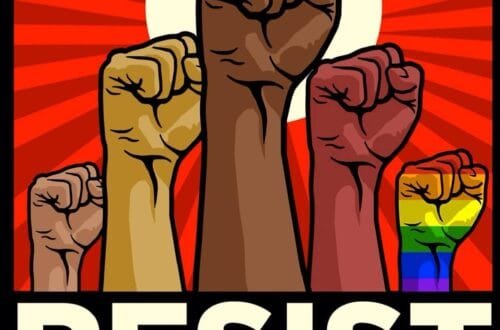Executive Order Fallout: The Disruption Caused by Trump

The Executive Order and Its Implications
The executive order enacted by the Trump administration to halt aid to various federal programs marked a significant shift in the delivery of social services across the nation. This order specifically targeted numerous programs that provide essential support to underserved populations, including housing assistance, food security initiatives, and educational funding. The administration provided reasoning focused on the necessity of cutting costs and reallocating federal resources to other priorities deemed more critical, arguing that these federal programs led to dependency rather than self-sufficiency.
Multiple federal programs, such as the Supplemental Nutrition Assistance Program (SNAP) and community development block grants, faced stark reductions in funding as a direct result of this executive order. This action prompted concerns among stakeholders, including local governments, non-profit organizations, and vulnerable communities that heavily relied on these services. The immediate consequences of these cuts were felt across the socioeconomic spectrum, with increased food insecurity and reduced access to housing for low-income families. Moreover, the anticipated benefits of the executive order were quickly overshadowed by its negative impact on the very demographics it aimed to affect positively.
In assessing the executive order’s scope, it is evident that the administration’s assertions about encouraging self-sufficiency may not fully reflect the complexities of economic stability. For many communities, these abrupt funding halt and changes in federal support programs exhibited not just immediate logistical challenges but also long-term implications for health, education, and overall quality of life. The response from social service agencies and advocacy groups illustrates a united front against such policy shifts, emphasizing the necessity of a more robust support system rather than a withdrawal of aid.
The Human Cost: Real Lives Affected
The enactment of Trump’s executive orders has led to significant disruptions in the lives of countless individuals and families. These policies, aimed predominantly at reducing federal assistance programs, have left many struggling to meet basic needs. For example, a single mother from Ohio, who relied on SNAP benefits to feed her two children, found herself facing hunger after her benefits were slashed. The emotional distress of not being able to provide for her family became a daily battle, illustrating the harsh reality experienced by many affected by these changes.
Statistics reveal that millions have been impacted by the cuts initiated by the executive order. A report from 2021 indicated that approximately 3 million people lost their food assistance, with a notable percentage of those being children. Such statistics translate into real stories—like that of an elderly couple in Florida who became food insecure due to reductions in their Medicare benefits. The couple’s previously stable financial situation turned precarious, forcing them to choose between essential medicines and groceries, further exacerbating their health issues.
Moreover, the disruption of support programs has left families in precarious circumstances. An immigrant family in Texas, who once depended on federal housing assistance, found themselves facing eviction due to abrupt policy changes. The emotional toll of uncertainty and fear of homelessness loomed large over their daily lives, dramatically affecting their mental health and the well-being of their children.
These anecdotes underscore the human cost associated with the policies implemented under the executive order. The statistics serve as a backdrop to individual narratives, driving home the message that changes in policy affect real lives. Understanding these implications highlights the need for compassionate discourse around governmental decisions that impact vulnerable populations.
Republicans’ Role and the Erosion of Democratic Principles
The response from Republican lawmakers to Trump’s executive order has been a complex interplay of support, dissent, and political calculus. Throughout his presidency, many Republicans aligned themselves closely with Trump’s policies, endorsing initiatives that not only reflected party loyalty but also raised concerns about the erosion of democratic principles. This alignment seems to contradict their oaths to uphold the Constitution, as they have often backed measures that could potentially destabilize governmental structures and undermine the foundational tenets of American democracy.
Supporting Trump’s controversial executive orders has highlighted an essential dilemma for the Republican Party: balancing allegiance to their party leader with the duty to protect democratic institutions. While some lawmakers openly expressed their doubts, the prevailing narrative within the party has often been one of acquiescence. This dynamic raises profound questions about the responsibilities of elected officials to their constituents and to the Constitution they vowed to protect.
Furthermore, the fallout from these policies has broader implications for the democratic process. The resulting erosion of institutional checks and balances, coupled with a growing partisan divide, fosters an environment where dissenting voices are sidelined. Reports suggest that this environment may discourage civic engagement and reduce public trust in governmental institutions, particularly when the actions taken by lawmakers appear to prioritize party loyalty over the public interest.
The alignment of Republican lawmakers with Trump’s executive orders underscores the challenge faced by the party in reconciling its actions with the espoused values of democracy. As political polarization intensifies, it becomes increasingly critical to assess the implications of such party allegiance on the health of democratic governance and the fundamental rights of citizens. Acknowledging this tension is vital to understanding the shifting landscape of American politics and its potential long-term consequences.
The Rise of Authoritarian Tendencies: What It Means for Our Government
The transition toward a ‘national CEO’ model of governance under the Trump administration marked a significant shift in the political landscape of the United States. This governance style exhibits characteristics often associated with authoritarian regimes, such as centralized control, reduced checks and balances, and a tendency to bypass traditional democratic processes. The emergence of these authoritarian tendencies raises critical questions about the health of American democracy and the value of civic engagement among citizens.
One of the primary attributes of authoritarian governance is the elevation of executive power at the expense of legislative and judicial oversight. During Trump’s presidency, actions often reflected a disregard for the collaborative frameworks that underpin democratic governance, leading to a consolidation of authority in the executive branch. This shift begets an obligation for citizens to scrutinize how leadership operates outside established norms, as it threatens to erode the foundational principles of democracy. A robust democracy relies on the separation of powers and the ability of various branches to check one another; thus, the rise of a national CEO model poses dire risks that can compromise governmental accountability.
Moreover, the tendencies toward authoritarianism can desensitize citizens to the erosion of civil rights and civil liberties. When citizens become complacent in the face of executive overreach, democracy weakens, opening doors for further abuses of power. As such, it is imperative that individuals understand the potential long-term ramifications of acquiescing to such leadership. Civic engagement emerges as a vital counterforce to these trends; by actively participating in governance, citizens can hold their leadership accountable and restore a commitment to democratic ideals.
As we reflect on the implications of the rise of authoritarian tendencies within the U.S. government, it becomes clear that preserving democracy requires vigilance and active participation from every citizen. Understanding these dynamics is essential for safeguarding democratic values for future generations.




